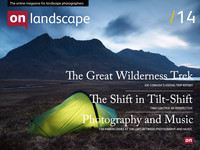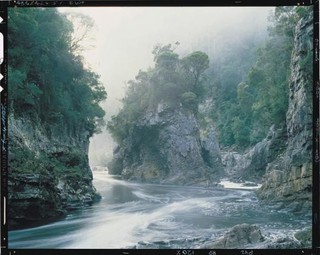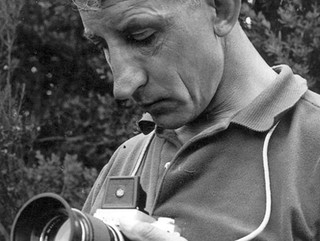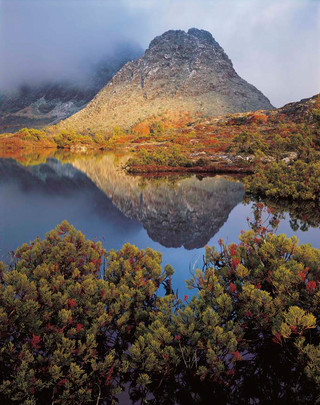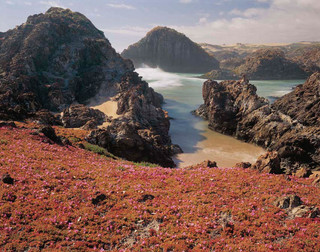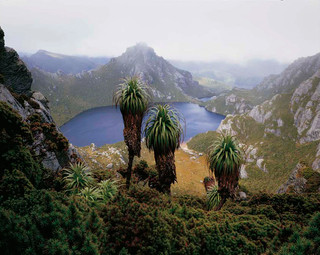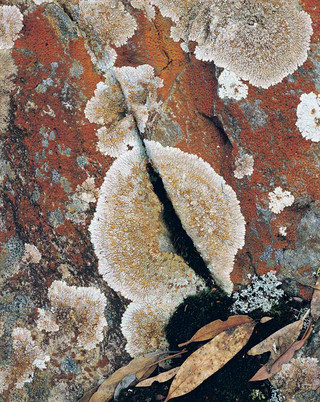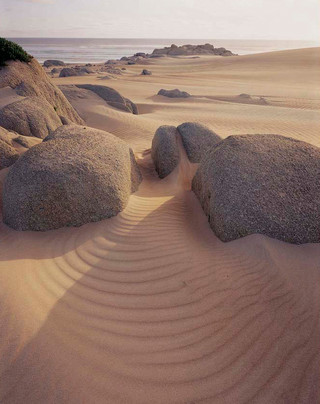Master photographer

Tim Parkin
Amateur Photographer who plays with big cameras and film when in between digital photographs.
I found out about Peter Dombrovskis when I was on a large format photography course with Joe Cornish and David Ward. Joe had a couple of books by Peter and both of them became very popular ‘hand arounds’ whilst whilst we enjoyed the few rare moments of downtime on a very intense course. Following the course I purchased my own copy of ‘Simply’ and was entranced by the photographs. Here was a photographer with a strong compositional sensibility that could create beautiful work even in the dullest conditions; in fact many of his skies are completely blown out - beautifully so. And if you have read my blog before now, you may have seen Joe talking about Peter Dombrovskis in one of my first videos which I’ve included at the end of this article.
Peter was born of Latvian parents in 1945 in a ‘displaced persons’ camp in Germany, migrated to Australia in 1950 and finally settled in Tasmania when he was five years old. He got his first camera in the 1960’s and combined with his love of the wilderness developed whilst living on the slopes of Mount Wellington. When he was 17 he met Olegas Truchanas, a leader of adventure camps, conservationist and also of Eastern european descent. Olegas took Peter under his wing and became a mentor and ‘father figure’ to him. It was only at this point that Peter really took an interest in photography. Olegas's campaigning to save rivers from destruction through damming was also a big influence on Peter. Because Olegas worked for the hydroelectric company that was doing the damming, he was banned from protesting about the proposed dam that would have flooded the river so he used his photography and wilderness talks to show people the beauty of the area, hoping that would be enough to motivate people. The campaign was eventually successful. As well as Olegas, Peter’s influences were varied with photographers such as Edward Weston and Ansel Adams playing an important part but the work of Eliot Porter in particular struck a particular chord, with books such as ‘In Wildness is the Preservation of the World’. The connection with Eliot was also through his chosen career as a botanist/zooligist.
Photographically, Peter’s early days working under the tutelage of Olegas lasted for five years until 1972 when Olegas slipped whilst trying to recover a canoe on the Gordon River, ironically the river he was trying to save at the time. Many people took part in the attempts to recover Olegas’ body but it was Peter that finally found it. Whatever happened in Peter’s thoughts we cannot know but from this point forward he took it upon himself to continue Olegas’ work and whilst he knew he would never be the raconteur that his mentor was - he was determined to make the images speak for him. The critical component of Peter’s style was put in place when he took up the large format camera in 1976 - a Linhof Master Technika with three lenses, a Nikkor 90mm f/4.5, Schneider 150mm Symmar-S and a Nikkor M 300mm f/9 (approx. equivalent to 24mm 40mm and 80mm lenses). This camera encouraged Peter to capture the full detail and splendour of all that he experienced. His first publication was a calendar which found a ready audience and then a book followed a few years later “The Quiet Land”, which whilst not displaying Peter’s trademark style (probably due to his use of 35mm cameras and early developing style) is still a strong introductory work. His piece de resistance was ‘Wild Rivers’. Over the period of 1979 to 1981, Peter rafted the length of the Franklin and later expored the Gordon and Denison rivers and put togther Wild Rivers to document the whole.
He was often asked if he took long hikes to escape to which he answered “When you go out there you don’t get away from it all, you get back to it all. You come home to what is important. You come home to yourself” and “‘I seldom take pictures from the roadside. Inspiration comes more readily after walking for a couple of days away from civilisation” Later in life, Peter travelled to photograph away from Tasmania in Fiji & Borneo amongst others but Tasmania was always his primary passion and it was in the wilderness that Peter died of a heart attack near his 50th birthday. He was posthumously inducted into the International Photography Hall of Fame in 2003, the first austrlian to receive this honour.
Joe Cornish on Peter Dombrovskis
"In some ways, no photographer has influenced me more than Peter Dombrovskis. In retrospect it seems odd that this should be so, given that he worked on the other side of the world. The first Dombrovskis images I saw were greetings cards, sent by friends travelling in the Antipodes. I remember being pleasantly surprised, rather than overwhelmed at first. Such simple compositions, such rich colours, yet such flat light! A good friend sent me a Dombrovskis calendar for Christmas, and that was when I became a fan, for the size and quality of the calendar images gave a depth and detail to the photographs that truly brought them to life. Shortly after, an extraordinary coincidence arose. Following Peter's untimely death, a memorial competition was instituted in Tasmania in his honour, with bursaries for young photographers as a prize. One of the winners of the inaugural Peter Dombrovskis Award was Cameron Crawford who through a mutual Tasmanian friend got in touch,
and during a number of months travelling in the UK spent a two week spell assisting me. As a gesture of thanks, Cam's mum sent me the original 'Dombrovskis' memorial book. This was an overwhelming gift, and remains one of my most cherished possessions. The connections has continued as I subsequently went to Tasmania and stayed with the Crawfords, and met Peter's widow Liz, and have acquired various Dombrovskis books since. But why the reverence for this flat light Tasmanian photography? For me, Peter's work has a totally deceptive simplicity and grace that seems to say, 'This is the natural world in all its varied wonder. It is real. It is what really matters.' There is no apparent reference to him, the photographer. There is no intrusion of photographic technique, or self-conscious artiness, just a penetrating gaze that reveals the surface textures and colours and space and form of the wild landscape, as if he had just happened upon the scene, and was the first human to do so. For me it was also about 'sublimating the ego', which I suppose is a fancy way of saying, 'it's not about me, it's about the subject'. Philosophically I do still regard that idea as a guiding light, and try to hold to it in principle.
It is worth saying that Peter is a also a hero to me because his images, or one in particular, helped protect areas of the Tasmanian wilderness from deforestation and hydro-electric development, especially the Franklin river. To put landscape photography to such effective use is, I think, part of our role, and an inspiration for future photographers. Peter collaborated effectively with politicians such as Green state senator for Tasmania, Bob Brown, and in his general publications with noted designer Rod Poole, and environmental scientist Jamie Kirkpatrick (the latter an excellent writer on matters ecological). The books and calendars in particular owe a great deal to Rod and to Jamie, whose expertise and insight adds greatly to the weight and power of the images. And Liz Dombrovskis, Peter's second wife was a tireless supporter of Peter and continued to manage his photographic archive and business following his death. Her influence and dedication helped make Peter's work available to inspire thousands of others, just as Peter clearly inspired others to support and collaborate with him. Prior to seeing Peter's work my own photography was heavily dependent on strong colour, sunlight, and I even used polarisers regularly. Since I became familiar with Dombrovskis I have developed a love for soft light, for fog, for mist, for overcast weather, for drizzle, for rain. (Boy, we could do with a bit of that in the UK right now!) His photography quite literally changed the way I saw the world" -- Joe Cornish
Read more on Peter Dombrovskis
Endframe: Morning Mist, Rock Island Bend by Peter Dombrovskis Endframe: “Deciduous Beech In Winter, Cradle Mountain – Lake St Clair, Tasmania” by Peter Dombrovskis. 1993 Simply & The Quiet Land Book Review – Peter Dombrovskis Wild Rivers Book Review– Peter Dombrovskis On the Mountain Book Review Peter Dombrovskis Dombrovskis Book Review
- Morning Light on Little Horn
- Deciduous Beech near Barn Bluff
- Ice and Alpenglow
- Rock Lichen, Lake Rodway
- Evening at Louisa Bay, South Coast
- Giant Kelp, Hasselborough Bay
- Lake Oberon, Western Arthur Range
- Pandani in the Mist
- Gordon Splits
- West Coast, Tasmania
- Dunes and Granite near Interview River”

